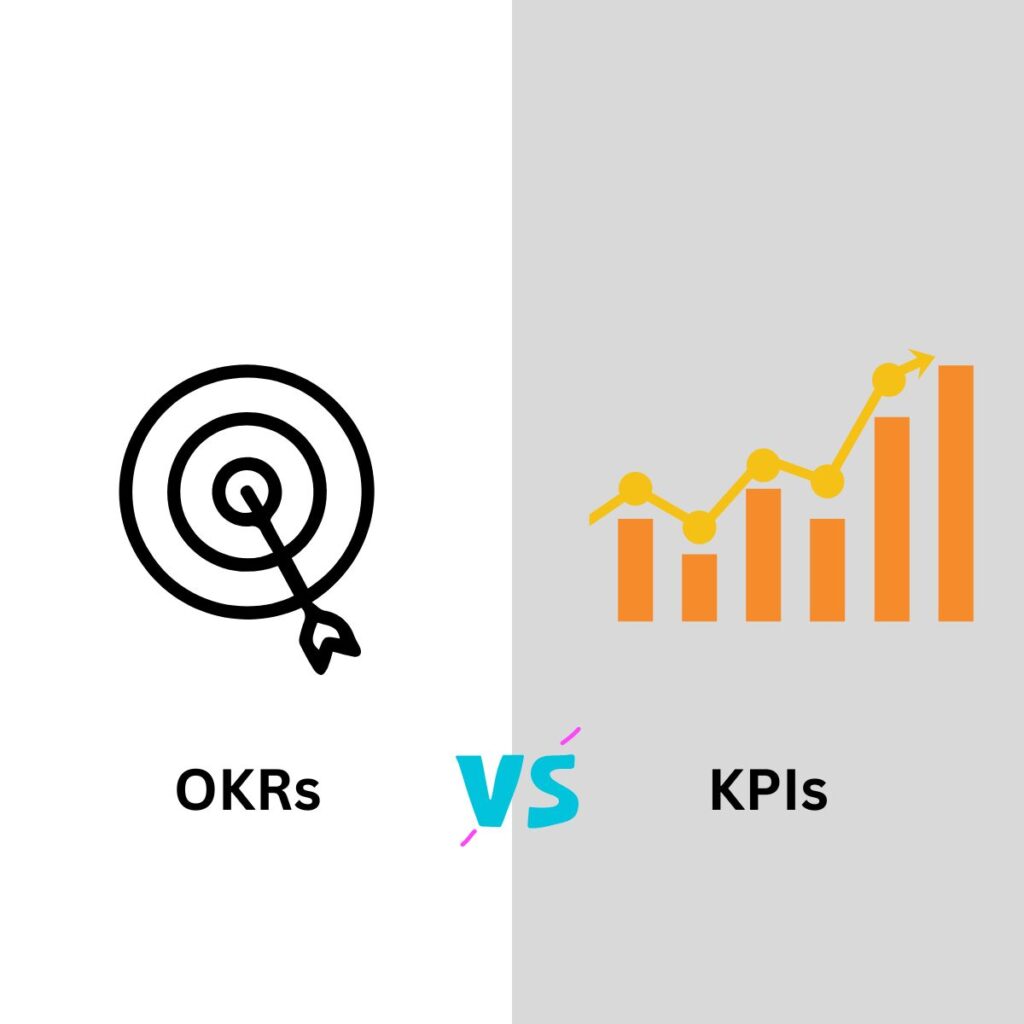Product OKRs (Objectives and Key Results) and KPIs (Key Performance Indicators) are goal-setting frameworks used in Product Management.
They serve different purposes and provide different levels of measurement and granularity.
Product OKRs:
OKRs are high-level goals that provide direction and focus for the product team. They are typically set for a defined period, such as a quarter or a year. OKRs consist of two components:
- Objectives: Objectives are ambitious, qualitative statements that define what you want to achieve. They represent the overarching goals of the product or team and should be inspiring and challenging.
For example: Objective: Increase user engagement and retention. - Key Results: Key Results are measurable, quantitative outcomes that indicate progress toward the objectives. They serve as specific milestones that track the success of the objective.
For example:
Key Result 1: Increase daily active users by 20%.
Key Result 2: Improve user retention rate by 10%.
The key results should be measurable and provide clear targets for the team to work towards. They should be specific, time-bound, and achievable within the defined period.
Product KPIs:
KPIs are specific metrics used to assess the performance of a product or feature. They are more granular and focused than OKRs, providing ongoing monitoring and evaluation of specific areas.
KPIs can be tied to various aspects of a product’s performance, such as user engagement, conversion rates, or revenue generation.
KPIs are typically tracked continuously and can be adjusted or refined as needed. They are used to understand the product’s current state and identify areas for improvement.
Examples of product KPIs include:
- Monthly active users (MAU)
- Average revenue per user (ARPU)
- Conversion rate from sign-up to purchase
- Customer satisfaction score (CSAT)
- Churn rate
KPIs provide specific data-driven insights into the product’s performance and help guide decision-making and prioritize areas of improvement.
In simple terms,
OKRs: Guides the product team towards success by providing direction and focus.
KPIs: Offers granular insights that help understand and optimize the product’s performance.
Both provide a balance between strategic objectives and actionable measurements for a Product’s continuous improvement.
